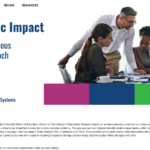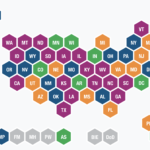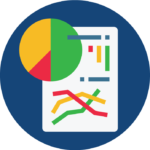For a Part C system, the fiscal data profile depicts demographic, service delivery, infrastructure, and administrative data in a variety of ways to make the fiscal data more comprehensible to users.
Fiscal Data Trend Profile Template (2023)


For a Part C system, the fiscal data profile depicts demographic, service delivery, infrastructure, and administrative data in a variety of ways to make the fiscal data more comprehensible to users.

Data linking is often necessary to address critical questions about program quality and to improve results for young children with disabilities and their families. Yet data linking can be challenging. Learn about ways to streamline this process.

A tireless activist and advocate, Judy helped develop legislation that would become the Individuals with Disabilities Education Act (IDEA), and she was a key figure in other federal legislation to increase access and inclusion for people with disabilities.

Compute response rates for your state’s family survey data and determine if the surveys you received are representative of the target population.

DaSy’s State of the States report shows that many early intervention (Part C) and early childhood special education (Part B, 619) state coordinators and data managers are interested in increasing data linking between IDEA programs. We share the story of one state’s journey to link Part C and Part B, 619 data.

Improving programs and changing systems can be hard, DaSy Dynamic Impact is an easy-to-use approach that provides a consistent, successful, and sustainable process to support your team.

Compare your state’s C4 family outcomes data to the national data in the three sub-indicator areas. Make comparisons to subgroups of states that use the same survey and scoring approach

Some states used additional tools/approaches to measure other family variables. States use survey methods to collect family outcomes data, but the questions and processes vary.

December 2022. ECTA and DaSy Center staff discuss the national performance data for indicators C3 and B7, including national data, state variations in performance, and TA resources

Data visualization continues to be a hot topic in all sectors, including education, health care, government, and business. It is essential in helping to interpret data and to communicate information. When we can easily turn data into useful information, it becomes actionable. We hope you use this toolkit to advance this goal in your own work.